#free workshops metro manila
Explore tagged Tumblr posts
Text

Literary Period After EDSA1986 - Present
The year 1986 marks a new beginning of a new scene for Filipino writers and artists. It saw the downfall of late President Ferdinand Marcos when he placed the Philippines under martial rule last September 21,1972. This action does not only oppress the writers' right to free expression but also created conditions that made collaboration and cooperation convenient choices for artists' struggling for recognition and survival. Furthermore, the growth of underground writing was created both in urban and in the countryside.
The popular "Edsa Revolution" (EDSA, a highway in Metro Manila that runs north to south from Caloocan to Baclaran) has paved the way for the flight of the dictator and his family to Hawaii, USA on February 24,1986. The revolt established the presidency of Corazon Aquino, which marked the "restoration" of a pre-Martial Law society. However, the Philippines did not recover that easily. The years that followed "Edsa" was a wild "roller-coaster" ride for many Filipinos. The unease times was caused by natural disasters that left the economic plans in shambles.
Militancy and belligerence best describes writing under the Martial Law regime. With the overthrow of the enemy in 1986, however, the literary activity showed certain disorientation manifesting itself in a proliferation of concerns taken up by individual writers and groups.
Creative writing centers after Edsa maybe grouped into two. Academic institutions where Creative Writing is part of the curricular offerings, and students majoring in Literature are able to come in contact with elder creative writers/critics/professors belonged to the first group. Such academic institutions includes the Silliman University; the University of the Philippines; the Ateneo de Manila University; De la Salle University; and last but not the least, San Carlos University in Cebu.
The second group is composed of writers' organizations that periodically sponsor symposia on writing and/or set up workshops for its members and other interested parties. UMPIL (Unyon ng mga Manunulat ng Pilipino), PANULAT (Pambansang Unyon ng mga Manunulat), Panday-Lipi, GAT (Galian sa Arte at Tula), KATHA, LIRA (Linangan sa Imahen, Retorika at Anyo), GUMIL (Gunglo Dagiti Mannurat nga Ilokano), LUDABI (Lubas sa Dagang Binisaya) and P.E.N.
Writers get to hear about new developments in writing and derive enthusiasm for their craft through these twin centers. The two "unyon" function as umbrellas under which writers belonging to a diversity of organizations socialize with fellow writers.
Award giving bodies, annual competitions and publications provide the incentives for writers to keep producing. These actions perform the important service of keeping the writers in the public consciousness, making it possible for commentators and audiences to identify significant established writers and give attention to emerging new talents.
The National Commission on Culture and the Arts (NCCA), a post-EDSA state sponsored institution, was created by the law in 1992, superseding the Presidential Commission on Culture and the Arts which was established in 1987. The said institution has a Committee on Literary Arts which funds workshops, conferences, publications and a variety of projects geared towards the production of a "national literature". The committee has the aim of developing writing that is multi-lingual, multi-cultural, and truly national.
Non-governmental organizations have helped hand in hand with some institutions in giving recognition to writers from specific sectors in the society. These NGO's includes the Amado V. Hernandez Foundation; the GAPAS foundation, and the KAIBIGAN.
Campus publications are another group of outlet that is of importance as a source of non-traditional, experimental writing. These campus publications could either be a weekly student newspapers, quarterly magazines, or annual literary journals. The University of the Philippines has the Collegian; The Diliman Review; and The Literary Apprentice. Silliman University has Sands and Coral; Ateneo de Manila University issues Heights and Philippine Studies; De la Salle University has Malate, Likha, and Malay to offer; University of Santo Tomas publishes The Varsitarian.
Overall, the character of the Philippine literary scene after "EDSA" maybe pinpointed be referring to the theories that inform literary production, to the products issuing from the publishers, to the dominant concerns demonstrated by the writers' output, and to the direction towards which literary studies are tending.
1. There is in the academe an emerging critical orientation that draws its concerns and insights from literary theorizing current in England and the United States.
2. Post-EDSA publishing has been marked by adventurousness, a willingness to gamble on "non-traditional" projects.
3. The declining prestige of the New Criticism, whose rigorous aesthetic norms has previously functioned as a Procrustean bed on which Filipino authors and their works were measured, has opened a gap in the critical evaluation of literary works.
4. The fourth and final characteristic of post-EDSA writing is the development thrust towards the retrieval and the recuperation of writing in Philippine languages other than Tagalog.
Reference: Angelfire.lycos.com
https://www.angelfire.com › litera1
Literary Periods - After EDSA
2 notes
·
View notes
Text
Japan Town in Glorietta Mall Takes Guests on a Culinary and Cultural Journey

I am just so in love with Japan. Even before I first got to travel to Land of the Rising Sun, I was already so captivated with the Japanese culture and way of life, most especially their food! Japanese cuisine is obviously my favorite, which is why my top places to eat are mostly Japanese restaurants. That's why I was really excited to attend the launch of the refreshed Japan Town in Glorietta Mall which brings all my favorites in one fantastic venue.
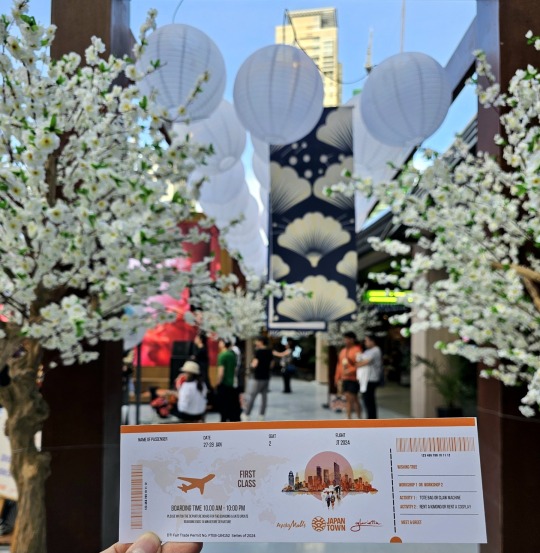
Glorietta, a bustling shopping and lifestyle destination in the heart of Metro Manila, has relaunched a hidden gem that brings the vibrant culture and exquisite flavors of Japan to the forefront. Welcome to Glorietta's Japan Town, a culinary haven that transcends the ordinary, offering the Japanese experience, both traditional and contemporary, without the need for a plane ticket. The Hungry Kat was invited last January 27, 2024 to be part of the festivities and activities that were available to guests at Glorietta and it was truly a fun and enjoyable weekend.
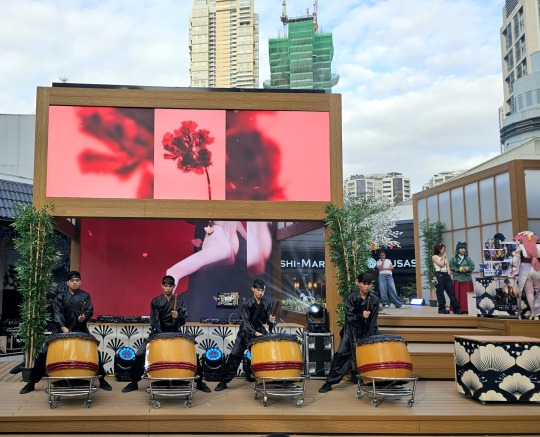
Glorietta's Japan Town isn't just for culinary enthusiasts; it's a destination for all. The communal atmosphere reminiscent of izakayas creates an ideal setting for friends to gather, unwind, and relish the energetic social scene. Japan Town also provides solace and a taste of Japan's culinary delights for those seeking a comforting escape after a challenging day's work. Moreover, Japan Town is a vibrant community hub where individuals can immerse themselves in their passion for everything Japanese. The central square stands as a focal point, boasting a LED screen that showcases the diverse works of various artists. In the upcoming months, it will also host a plethora of events and fairs, promising an exciting calendar for mallgoers. Anticipate the rhythmic beats of DJs during events like Sunsets in Shibuya, where the lively ambiance of Tokyo evenings comes to life.

For this weekend, Japan Town became a haven of activities for everything Japanese. Guests came in their best cosplay outfits to match the beautiful and scenic surroundings.
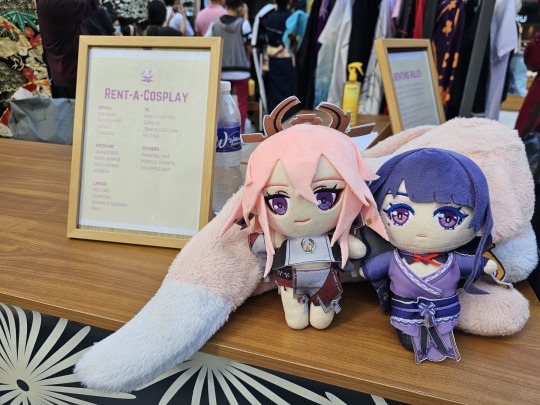
Those who were not able to wear costumes could also Rent-A-Cosplay for the afternoon to bring out their favorite anime and game characters.
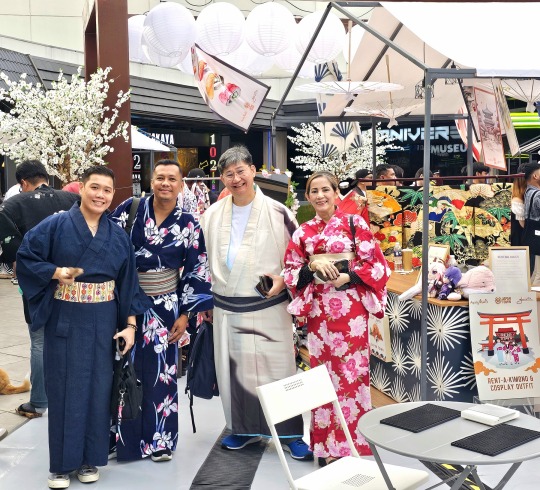
They also had Rent-A-Kimono so you could take gorgeous photos and feel as if you were really in Japan.
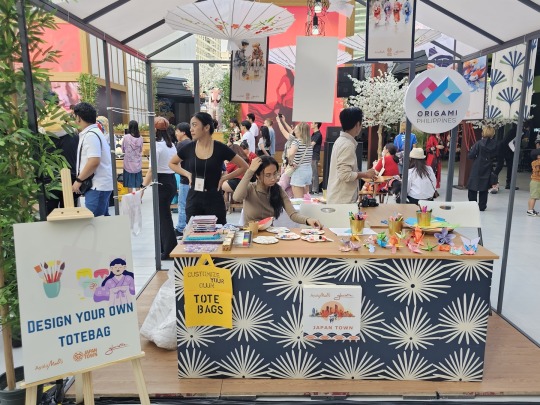
There were many other activities that guests could participate in for free. All you had to do was to present a single receipt purchase of P2000 from any of the Japan Town merchants and restaurants. Guests could design their own totebags or participate in the Origami workshop.
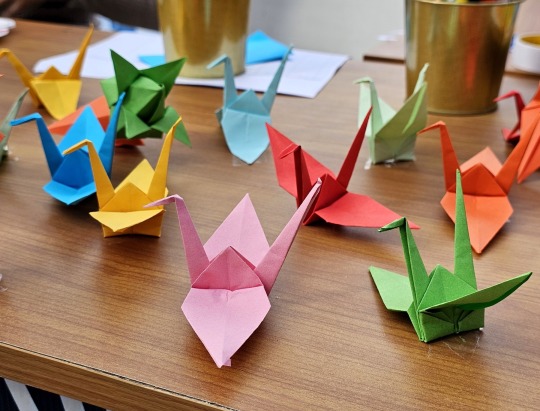
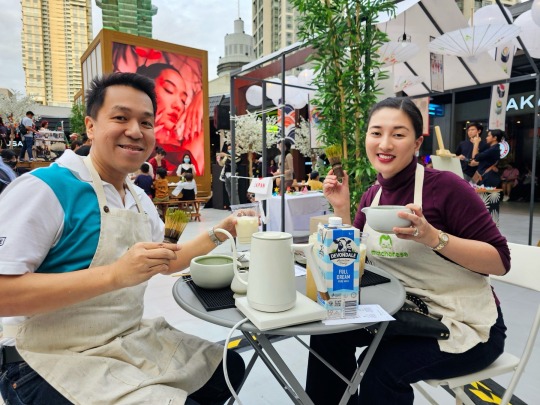
We decided to join the Matcha Workshop by Matchanese.ph where we could mix and create our own Matcha Lattes.
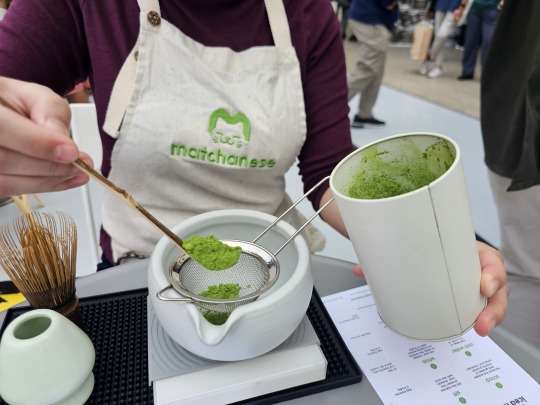
The instructor taught us the art of matcha making which comes with precise measurements and strokes. We first had to weigh the matcha powder using digital weighing scales then whisk it into a thick and bubbly consistency. It was actually hard work because my arms got tired from all the whisking and blending.
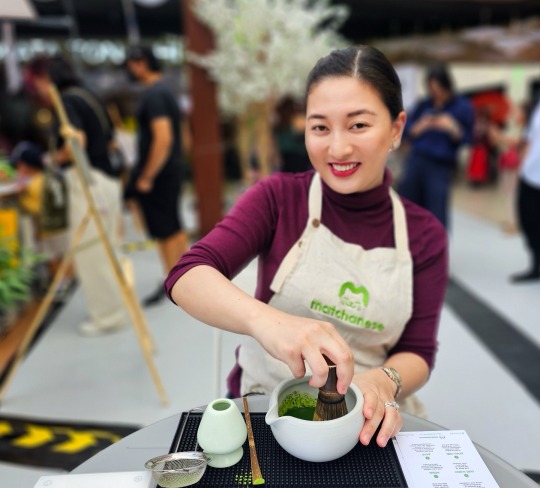
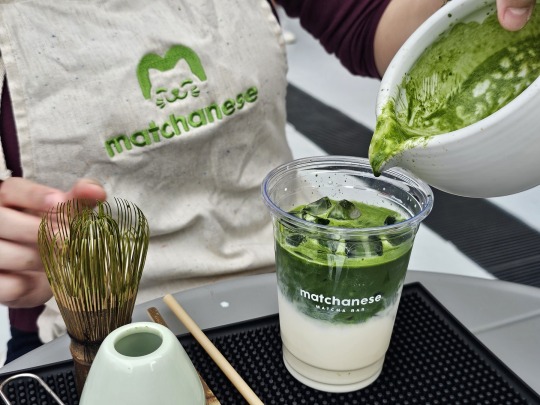
We then prepared our milk and ice then proceeded to pour our matcha creations into our Matcha Latte cups. We also got to take home some of the matcha beverages we did.

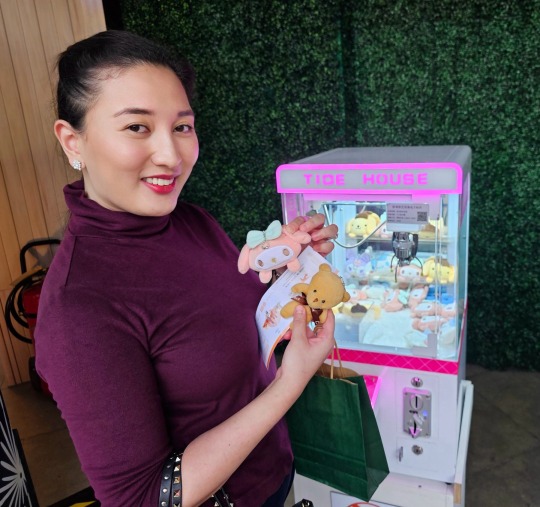
One of my favorite things to do in Japan are the Claw Machines! That's why I was so happy to see these claw machines at Japan Town which were free to play. I spent a lot of time that afternoon trying to catch these prizes so I was ecstatic when I finally won!
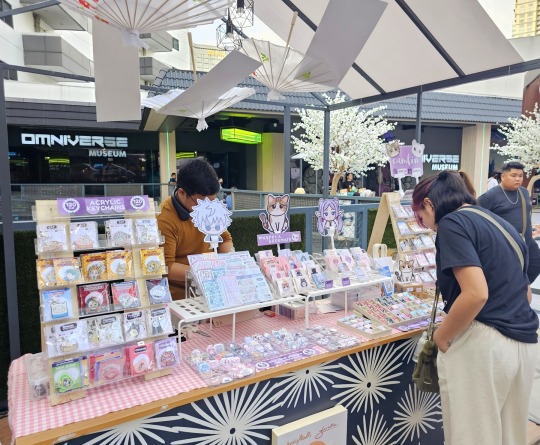
Japan Town also featured some stalls selling cute kawaii items from stickers to key chains and prints and more.
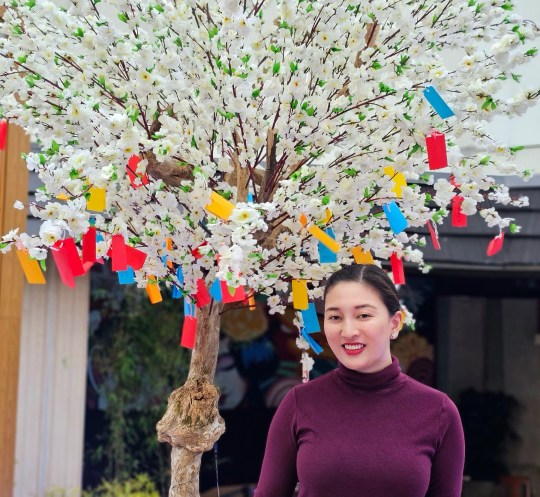
I also made sure to drop by the Wishing Tree to grant me good fortune and to make my wishes come true this year.
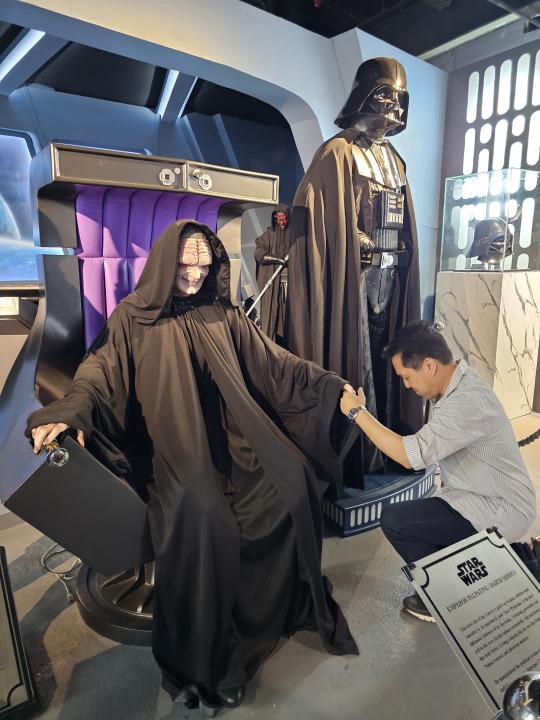
Another great activity you can do at Japan Town is to experience wholesome family entertainment at the Omniverse Museum. This indoor attraction showcases a vast collection of authentic pop culture memorabilia from beloved comic books, movies, novels, and TV series. My husband took it a little too far when he saw some of his favorite characters.
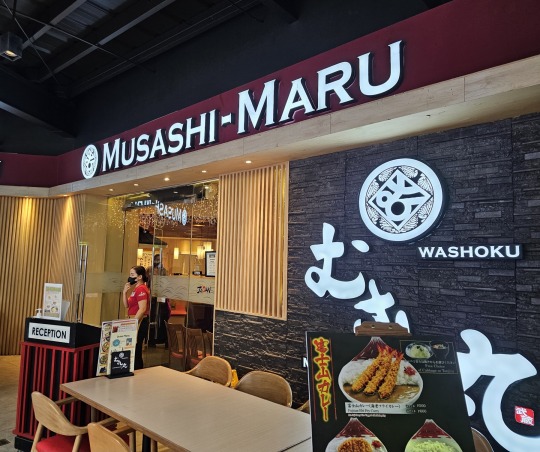
Japan Town at Glorietta boasts an enticing array of Japanese restaurants, each offering a unique culinary journey that captures the essence of Japan's diverse and rich food culture and promises an immersive dining experience that transports patrons to the lively streets of Japan.
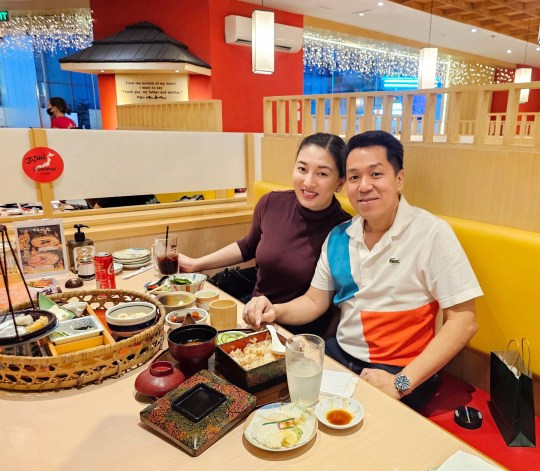
One of the restaurants that we wanted to visit at Japan Town was Musashi-Maru, a haven for sushi enthusiasts which offers a delectable dining experience with a focus on fresh and high-quality ingredients.
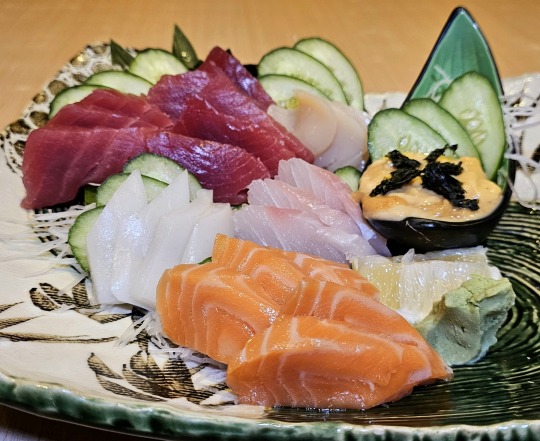
We ordered the Osashimi 6 Shu Mori (P1400) for our starters which had six kinds of assorted sashimi including salmon, tuna, scallops, lapu lapu, squid, and delectable uni. We were quite impressed with the quality of their dishes which can match those authentic Japanese restaurants in Little Tokyo in Makati.
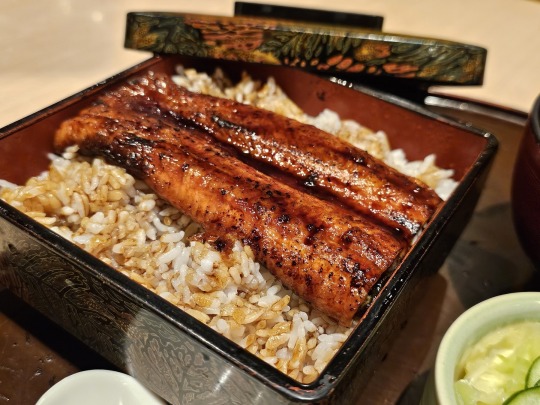
My husband had the Una-Ju (P980) with its grilled eel on top of Japanese rice. It was really like you were eating this in Ginza, Tokyo.
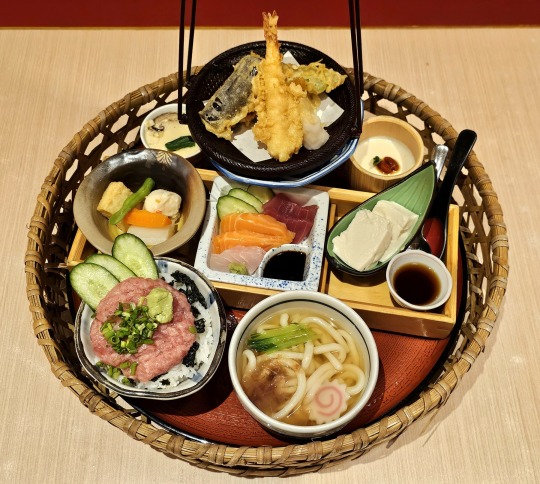
We then shared the Hanakago Zen Negitoro Don (P1120), a big basket that comes with Mini Negitoro Don, Assorted Tempura, Assorted Sashimi, Nimono Garoni, Mini Udon, Tofu, Chawanmushi, and Almond Jelly.
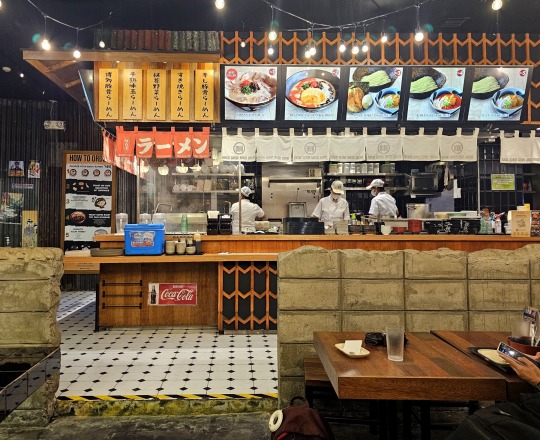
We had already tried most of the other restaurants at Japan Town but it was always fun to go back. Experience a fusion of flavors at Mitsuyado Ramen Shokudo which offering a unique twist to traditional ramen.
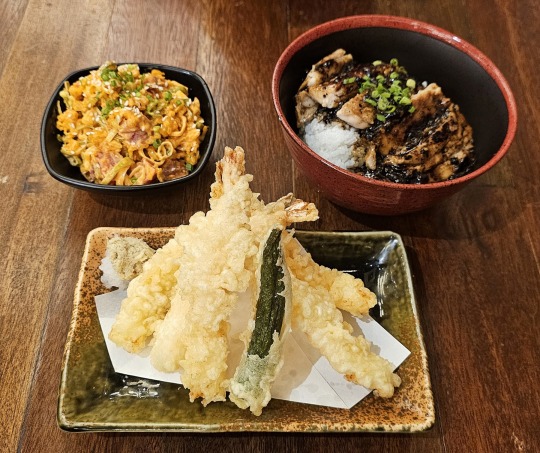
This time we ordered their Spicy Tuna, Black Pepper Chicken Donburi, and Ebi Tempura.
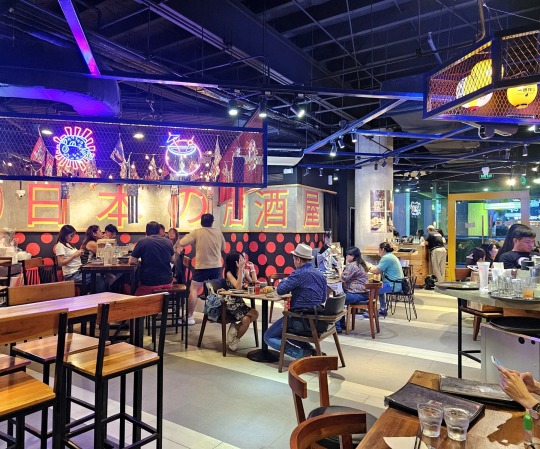
To finish our food crawl at Japan Town, we headed next door to 102 Izakaya. This is where you can immerse yourself in the izakaya culture where small plates and a relaxed atmosphere create the perfect setting for socializing and enjoying Japanese snacks.
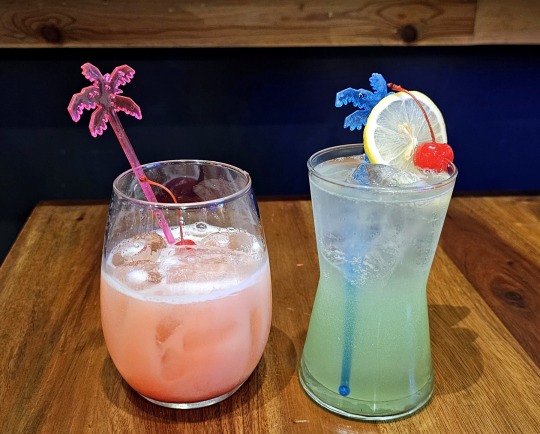
I remembered enjoying their Japanese Cocktails like the Sakura Sour and the Japanese Iced Tea before so we had to have these again.
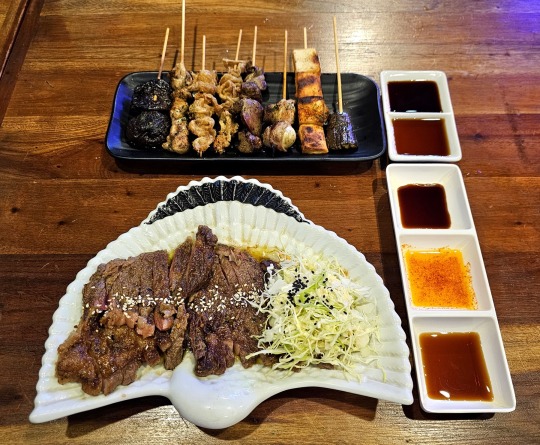
We finished our exciting day with the Ribeye Saikoro Steak (P920) paired with the Yakitori Platter (P398) that comes with 8 sticks of delicious kushiyaki.
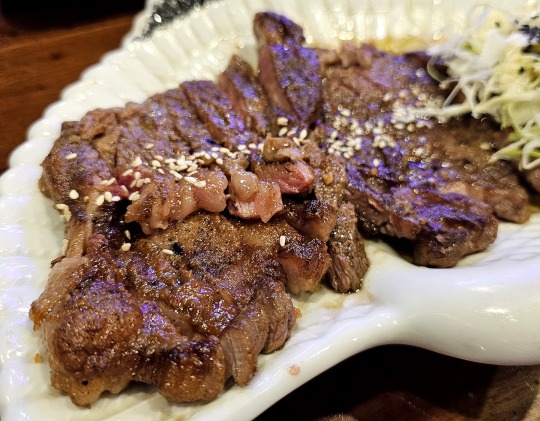
There are four other delicious restaurants in Japan Town that we did not get to explore this time. Shaburi & Kintan is where you can indulge in a dual culinary experience with shabu-shabu and yakiniku, creating a communal dining experience that brings friends and family together. Customize your curry experience at Coco Ichibanya with its diverse range of toppings and spice levels that cater to various palates. Dive into the world of ramen with Ramen Nagi, where steaming bowls of noodles and flavorful broths provide a taste of Japan's beloved comfort food. Finally, renowned for its tonkotsu ramen, Hakata Ton-Ichi invites guests to savor the robust and hearty flavors of this Fukuoka specialty.
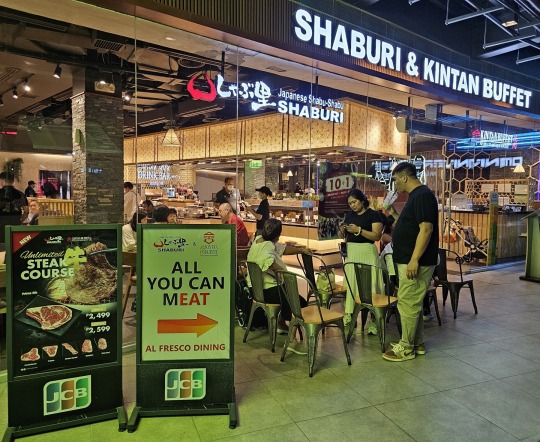
We would like to thank our Ninang Bess Howe and her Better Mondays PR Consultancy team for hosting this very entertaining and filling weekend at Japan Town. With its diverse dining options, welcoming atmosphere, and immersive exploits, Japan Town at Glorietta fosters deeper cultural appreciation and promises an experience that embraces the best of Japan right in the heart of Metro Manila. You can find Japan Town at the Level 4 roofdeck of Glorietta 3 in Ayala Center, Makati City.
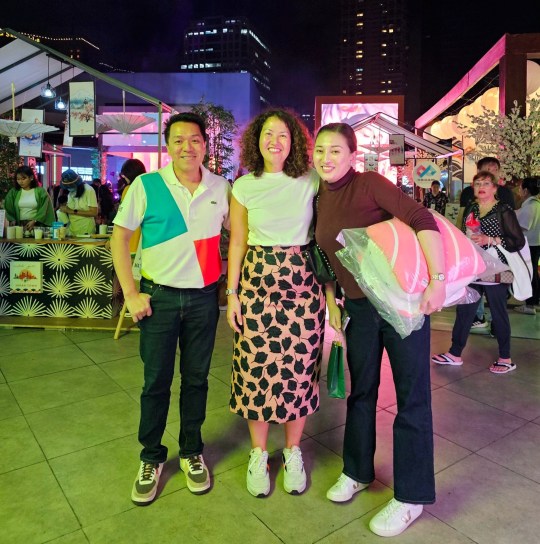
0 notes
Text
Makati: A Prime Business Hub for Dynamic Offices and Enterprises
Makati, a bustling city in the heart of Metro Manila, Philippines, has long been renowned as a prime business hub for dynamic offices and enterprises. With its strategic location, modern infrastructure, and vibrant business community, Makati continues to attract local and international businesses seeking premium serviced offices in Makati and collaborative work environments.

This article will explore the various options available to businesses, including serviced offices, co-working spaces, and virtual offices in Makati.
Serviced Offices in Makati
Serviced offices have become increasingly popular among businesses looking for fully-equipped, hassle-free solutions. These ready-to-use spaces offer a range of amenities, including furnished workstations, high-speed internet, reception services, and meeting rooms. Makati boasts a plethora of serviced office providers, catering to businesses of all sizes, from start-ups to established corporations.
The advantage of choosing a serviced office in Makati is its flexibility. Businesses can quickly set up their operations without the burden of long-term leases or the need to invest heavily in office infrastructure. Furthermore, serviced offices often come with additional services like IT support, administrative assistance, and access to communal areas, creating a conducive environment for productivity and collaboration.
Co-working Spaces in Makati
As remote work gains momentum, co-working spaces have become a sought-after option for freelancers, entrepreneurs, and even larger organizations. Makati offers an impressive array of co-working spaces, each catering to diverse needs and work preferences.
Co-working spaces in Makati provide an excellent opportunity for professionals to work in a dynamic and vibrant atmosphere. With shared workspaces, individuals and teams can interact, network, and collaborate with like-minded individuals from various industries. These spaces often host events, workshops, and networking sessions, fostering a sense of community and creativity.
Additionally, co-working spaces in Makati are typically equipped with modern amenities, including ergonomic furniture, meeting rooms, private offices, printing facilities, and high-speed internet. The flexibility of membership plans allows businesses to choose the most suitable arrangement based on their specific requirements.
Office Spaces for Rent in Makati
For businesses seeking more traditional office setups, Makati offers a wide selection of office spaces for rent. Whether a small office for a start-up or a spacious floor for an established company, the city has various options across various locations.
Choosing an office space for rent in Makati allows businesses to establish a dedicated and personalized workspace. Companies can customize the office layout and design to reflect their brand identity and corporate culture. Additionally, long-term lease agreements often come with cost advantages and allow businesses to establish a more permanent presence in the city.
Virtual Offices in Makati
Virtual offices in Makati present an ideal solution for businesses that do not require a physical office space but still seek a professional business address and administrative support. Virtual office services provide companies with a prestigious business address, mail handling services, call forwarding, and even access to meeting rooms on demand.
Having a virtual office in Makati allows businesses to maintain a professional image and establish credibility with clients and partners. It also enables remote teams to operate efficiently with a central location for communication and coordination.
Makati: where productivity meets possibility
With its vibrant economy, modern infrastructure, and supportive business environment, Makati remains a prime destination for dynamic offices and enterprises. Whether businesses opt for serviced offices, co-working spaces, traditional office spaces for rent, or virtual offices in Makati, the city offers diverse solutions to suit various needs.
By providing flexible and well-equipped office spaces, Makati fosters innovation, collaboration, and growth among businesses of all sizes. As the business landscape evolves, Makati remains a top choice for companies seeking a strategic location and a thriving ecosystem to thrive and prosper.
Contact us at https://salesrain.com/contact-us with your specific requirements. Leap and elevate your business to new heights!
About The Author
Sales rain - A market leader in serviced offices offering flexible call center seat leasing and private offices in the Philippines with multiple sites in Manila, PH.
0 notes
Text

POST EDSA: REVOLUTION CONTRIBUTION IN THE PHILIPPINE LITERATURE
A crucial period in the history of Philippine literature was the change from decades of "guided newspapering" to free and ethical journalism. Significant political, social, and cultural shifts occurred as a result of the EDSA Revolution in the Philippines. The post-EDSA was a period of transition from decades of "guided newspapering" to that of free and responsible journalism During the 1986 EDSA People Power Revolution, in order to put an end to President Ferdinand E. Marcos' tyranny and usher in a new age characterized by genuine freedom and democracy, millions of Filipinos from all walks of life marched down Epifanio de los Santos Avenue (EDSA), the major thoroughfare of Metro Manila. It was a revolution defined by its nonviolent methods, driven by a nation united to recapture liberty. This spirit of the movement was not limited to Manila; it appeared in nonviolent demonstrations held in many places around the nation. Philippine literature saw significant upheaval and alteration in the years following the EDSA Revolution. With the rise of the alternative press as the new mainstream media, writers were given a platform to express themselves in novel ways. A flourishing of Philippine literature resulted from this unprecedented freedom of expression, with authors addressing concerns of social justice, human rights, and national identity in novel and fascinating ways. In the Philippines today, authors and journalists are still motivated by the legacy of this time. In 1989, the Advertising Foundation of the Philippines was organized as the "social development" arm of the industry through development advertising. The period saw media personalities invading politics. There was the liberalization and deregulation of the telecom sector and the emergence of mass-based Information Technologies (PCs, cellular technology). The Academic institutions where Creative Writing is part of the curricular offerings, and students majoring in Literature are able to come in contact with elder creative writers/critics/professors belonged to the first group. Such academic institutions includes the Silliman University; the University of the Philippines; the Ateneo de Manila University; De la Salle University; and last but not the least, San Carlos University in Cebu. The National Commission for Culture and the Arts (NCAA) was created by law in 1992. It has a Committee on Literary Arts which funds workshops, conferences, publications and a variety of projects geared towards the production of a “national literature”. The committee has the aim of developing writing that is multi-lingual, multi-cultural, and truly national. The Philippine Press Institute was revived. Its mission was to professionalize the Philippine press through continuing education, adoption of the Journalists Code of Ethics, and the giving of Community Press Awards. Overall, the character of the Philippine literary scene after "EDSA" maybe pinpointed be referring to the theories that inform literary production, to the products issuing from the publishers, to the dominant concerns demonstrated by the writers' output, and to the direction towards which literary studies are tending. References: Media Museum. (n.d.). http://commmedia.aijc.com.ph/timeline/post_edsa_period.html Philippine Literature After EDSA Revolution. (n.d.). https://www.slideshare.net/JessPalo1/litt-1-report Photo reference:
https://images.app.goo.gl/5jWPBWPxwGWLGztM9
0 notes
Text
ABOUT POST ESDA REVOLUTION AND THE CONTRIBUTION IN PHILIPPINE LITERATURE.
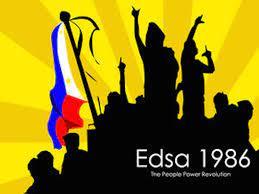
The year 1986 marks a new beginning of a new scene for Filipino writers and artists. It saw the downfall of late President Ferdinand Marcos when he placed the Philippines under martial rule last September 21,1972. This action does not only oppress the writers' right to free expression but also created conditions that made collaboration and cooperation convenient choices for artists' struggling for recognition and survival. Furthermore, the growth of underground writing was created both in urban and in the countryside.
The popular "Edsa Revolution" (EDSA, a highway in Metro Manila that runs north to south from Caloocan to Baclaran) has paved the way for the flight of the dictator and his family to Hawaii, USA on February 24,1986. The revolt established the presidency of Corazon Aquino, which marked the "restoration" of a pre-Martial Law society. However, the Philippines did not recover that easily. The years that followed "Edsa" was a wild "roller-coaster" ride for many Filipinos. The unease times was caused by natural disasters that left the economic plans in shambles.
Militancy and belligerence best describes writing under the Martial Law regime. With the overthrow of the enemy in 1986, however, the literary activity showed certain disorientation manifesting itself in a proliferation of concerns taken up by individual writers and groups.
Creative writing centers after Edsa maybe grouped into two. Academic institutions where Creative Writing is part of the curricular offerings, and students majoring in Literature are able to come in contact with elder creative writers/critics/professors belonged to the first group. Such academic institutions includes the Silliman University; the University of the Philippines; the Ateneo de Manila University; De la Salle University; and last but not the least, San Carlos University in Cebu.
The second group is composed of writers' organizations that periodically sponsor symposia on writing and/or set up workshops for its members and other interested parties. UMPIL (Unyon ng mga Manunulat ng Pilipino), PANULAT (Pambansang Unyon ng mga Manunulat), Panday-Lipi, GAT (Galian sa Arte at Tula), KATHA, LIRA (Linangan sa Imahen, Retorika at Anyo), GUMIL (Gunglo Dagiti Mannurat nga Ilokano), LUDABI (Lubas sa Dagang Binisaya) and P.E.N.
Writers get to hear about new developments in writing and derive enthusiasm for their craft through these twin centers. The two "unyon" function as umbrellas under which writers belonging to a diversity of organizations socialize with fellow writers.
Award giving bodies, annual competitions and publications provide the incentives for writers to keep producing. These actions perform the important service of keeping the writers in the public consciousness, making it possible for commentators and audiences to identify significant established writers and give attention to emerging new talents.
The National Commission on Culture and the Arts (NCCA), a post-EDSA state sponsored institution, was created by the law in 1992, superseding the Presidential Commission on Culture and the Arts which was established in 1987. The said institution has a Committee on Literary Arts which funds workshops, conferences, publications and a variety of projects geared towards the production of a "national literature". The committee has the aim of developing writing that is multi-lingual, multi-cultural, and truly national.
Non-governmental organizations have helped hand in hand with some institutions in giving recognition to writers from specific sectors in the society. These NGO's includes the Amado V. Hernandez Foundation; the GAPAS foundation, and the KAIBIGAN.
Campus publications are another group of outlet that is of importance as a source of non-traditional, experimental writing. These campus publications could either be a weekly student newspapers, quarterly magazines, or annual literary journals. The University of the Philippines has the Collegian; The Diliman Review; and The Literary Apprentice. Silliman University has Sands and Coral; Ateneo de Manila University issues Heights and Philippine Studies; De la Salle University has Malate, Likha, and Malay to offer; University of Santo Tomas publishes The Varsitarian.
Overall, the character of the Philippine literary scene after "EDSA" maybe pinpointed be referring to the theories that inform literary production, to the products issuing from the publishers, to the dominant concerns demonstrated by the writers' output, and to the direction towards which literary studies are tending.
1. There is in the academe an emerging critical orientation that draws its concerns and insights from literary theorizing current in England and the United States.
2. Post-EDSA publishing has been marked by adventurousness, a willingness to gamble on "non-traditional" projects.
3. The declining prestige of the New Criticism, whose rigorous aesthetic norms has previously functioned as a Procrustean bed on which Filipino authors and their works were measured, has opened a gap in the critical evaluation of literary works.
4. The fourth and final characteristic of post-EDSA writing is the development thrust towards the retrieval and the recuperation of writing in Philippine languages other than Tagalog.
The effect of post edsa revolution contributes to the philippine literature, because of death Ninoy Aquino in 1983 , the temper of poetry and theatre derived much its heat and direction from the political culture of underground national democratic movement. Due to this incident the impact of his death made people more literate.
SOURCE:https://www.slideshare.net/JessPalo1/litt-1-report
0 notes
Text
10 Things You Didn't Know About Albrecht Durer Watercolor Pencils
10 Things You Didn’t Know About Albrecht Durer Watercolor Pencils
When I had the opportunity to do a series of workshops using watercolor pencils last summer, I can’t help but check out the name written on my watercolour pencils. It said Albrecht Dürer. Every time I’m given an assignment such as create hand-lettered quotesor something, I love reading up on its story. Well, I realized that years after I no longer have to go to school, I actually enjoy…
View On WordPress
#art events metro manila#art events philippines#art of albrecht durer#faber#faber-castell#faber-castell colored pencils#faber-castell philippines#free drawing workshop#free lettering workshop#free workshops googly gooeys
2 notes
·
View notes
Text
ANTI DRUGS CAMPAIGN
Published: 21 May 2013
Broadening Campaigns and Strengthening Advocates
Community outreach programs and advocacy programs are constantly conducted in different key settings such as schools, communities, and workplaces. During these activities, members of the DDB staff serve as resource speakers orienting the participants on the country’s drug abuse problem, the ill effects of drug abuse and the legal consequences of being involved in illegal drugs activities.
Barkada Kontra Droga (BKD, Peer Groups Against Drugs)
As an effective peer-based preventive education and information program to counter the dangers and ill effects of drug abuse, the Board has institutionalized the BKD program in order to enlist the participation of more in and out-of school youth, and eventually organize them into a movement of young people who are catalysts within their peer groups in advocating a healthy, drug-free lifestyle.
As of this year, there are 50, 277 BKD members from 251 chapters nationwide. The DDB has also launched the “Nationwide Search for the Best BKD Program”.
National Youth Congress on Drug Abuse Prevention and Control
This annual three-day live in Congress is designed to provide an open and comfortable atmosphere for fun, real work and innovative strategic planning to address the drug problem in the respective localities of the youth participants. A team of anti-drug advocates and facilitators provide participants the opportunity for positive discussions/dialogues, structured learning activities, workshops, and inputs. The team approach is employed throughout the congress to foster teamwork, learning, camaraderie and harmonious relationship of youth delegates.
In 2012, 195 participants from different organizations nationwide who attended the 20th Youth Congress held in Dagupan City, duly hosted by the Local Government Unit of Dagupan, were added to the 2,735 youth leaders who have participated in the training since 2002.
Drug Abuse Resistance Education (DARE) Program
The Drug Abuse Resistance Education Program (DARE) is being enhanced to complement the implementation of NDEP. DARE offers a variety of activity-oriented techniques which are designed to encourage student-generated responses to problem-solving situations, specifically on drug abuse. This is being implemented in collaboration with the Philippine National Police.
Since 2010 to 2012, 156 DARE Police Officers have been trained and have already conducted classroom teaching among grades five and six pupils in various public elementary schools.
Kids Against Drugs Program
To bring the anti-drug advocacy to the children, the DDB participates in the annual celebration of the Children’s Month every October. The DDB conducts the Kids Against Drugs program, a primary prevention activity that aims to inculcate the skills of “Saying ‘No’” to children as a firm foundation for preventive education.
922 children have been reached-out to since this program’s implementation in 2006.
National Drug Education Program (NDEP)
This program which is currently implemented in elementary and secondary schools, in cooperation with DDB-member agency DepEd, entails five components – curriculum and instruction, co-curricular and ancillary services, teacher and staff development, parent education and community outreach, and research, evaluation and monitoring – which is comprehensive in nature and provides a holistic approach to the problem of drug abuse. It was designed to enable all sectors to work collaboratively, with the school system as the core, thereby, unifying all sectoral endeavors.
240 school administrators, guidance counselors, school-based health officers and teachers have attended several trainings held on NDEP facilitation and implementation nationwide.
Drug Abuse Prevention Program for the Transport Groups
This is a primary prevention activity involving the public transport groups designed to ensure the safety, well-being of the commuters and pedestrians by having drug-free transport personnel. Cooperating agencies are the DDB, DOLE, DOH, PDEA, LTFRB, LTO, and the Philippine Global Road Safety. It seeks to reduce the incidence of drug related vehicular accidents, promote public order and safety on the streets; and organize anti-drug patrol among drivers and other transport personnel.
Since its implementation in 2011, the DDB has been able to mobilize 288 members of the transport sector.
Nationwide Caravan of Youth Against Drugs
This new advocacy program, done in partnership with DDB-member agency National Youth Commission aims to intensify youth empowerment efforts to zero-in on drug abuse. Project coverage includes six (6) key cities of the country namely: Metro Manila, Davao, Cebu, Zamboanga, Naga, Cagayan De Oro, and Baguio City.
The caravan has enjoined at least 1,400 youth from various communities, organizations and academic institutions into the anti-drug abuse advocacy. It also aims to impart the ill-effects of substance abuse and dependence and to highlight best practices of youth groups and networks in the intensified campaigns and initiatives in combating drug dependence.
1 note
·
View note
Text
Retracing Roots: Design Week Philippines

My pursuit to retrace my roots as a Filipino led me to explore once again the National Museum and attend a progressive event spearheaded by the Department of Trade and Industry (DTI)-Design Center of the Philippines.
Design Week Philippines promotes first-rate design in the metro, fosters creativity and spur innovations. Their theme for 2019 is Kaleidoscope with the tagline Seeing the World Differently through Design. It aims to highlight a network fostering convergence of design, art, business, creative, and tech industries, expanding an array of new possibilities to further enrich local economies and talents, promote culture and heritage, develop sustainable communities, and strengthen nation-building.

They have Design Talks that motivate the participants to improve their ways towards positive change, Design Tours to highlight different arts & community spaces. They’ve also got Creative Workshops that provide awareness and interactive platform for the participants to get their hands and mind on the available creative activities, and a Creative Environment that bridges collaboration among partners who share a common goal of promoting awareness and appreciation on design, creativity, arts, culture and heritage conservation.
This event that was held on the 22nd through to the 27th of April this year is sustainability, conservation, and artistic innovation in a nutshell. Though we weren’t able to attend the talks, tours and workshops, we got to witness the collaboration of the participants, the sustainable and innovative products that are certified made in the Philippines by Filipinos for the Filipinos, and we’ve seen the thirst for knowing more about the Philippine culture. There are a lot of small brands that promote their own advocacy which I think is a good foundation for a purposeful and efficient business. Conscious brands that raise awareness surrounding sustainability and cultural heritage are what our country strongly need today especially with all that’s been going around our environment and slowly fading identities as Filipinos.


Since I started having interest in the preservation of our cultural heritage and zero-waste, I found events like this to appear more often on my social media feed- eventually making a curated list of related events to attend to. It’s as simple as browsing through Facebook events that are related to your topic of interest and letting their system find more for you to explore. I’ve found out that there are many cultural tours around Intramuros, and free-to-public talks in many of the universities around Metro Manila. Some events also have installments in various cities which you should also consider.
Many things don’t naturally come to us even with the current technology providing us information with only a touch of a key. Good things have to be painfully sought for. Finding resources and better ways to live sustainably; ways to help preserve and protect our cultural heritage are all worth painfully seeking for so even if I had to brave the E. Aguinaldo highway traffic and walk the gritty streets of Manila under the scorching hot afternoon sun, I continued to pursue my quest to retrace my roots and be acquainted with what else we can offer as FIlipinos.

#womanlalaboy#tayo#thewritestuff#philippines#filipino#pilipinas#pinas#pinoy#pilipino#design week philippines#department of trade and industry#dti#design
3 notes
·
View notes
Text
Manila Car Maintenance Tips to Prolong Your Car's Life
No matter how expensive or powerful your car is, it will soon need repair. To prevent this from happening, you need to observe periodic auto care and maintenance. In the succeeding paragraphs, you will discover simple yet effective car maintenance tips that will help save you money in the long run.
1.It is important to change the oil in accordance with the manufacturer's recommended car maintenance schedule. For most cars, this is every 6,000 kilometers or thrice a month, whichever comes first. Oil change ensures that the engine oil is clean and at the proper levels, which keeps the engine running smoothly.
2.Give the radiator a quick check to make sure it is full and have a professional car mechanic check the level of antifreeze in the cooling system. If it overheats, it can result in huge damage that you could have prevented with some fundamental cooling system maintenance.
3.It is wise to take your car to a Manila car repair service centre for full inspection. In doing so, you can rest assured that all parts of your car are given special attention. Hence, the chances of experiencing breakdowns are slim.
4.Go to the same cars repair shop in Manila as the mechanic will notice things you may not about the car and can provide you with car care and maintenance advice that a mechanic seeing it for the very first time may miss.
5.Laziness can take a toll both on your and your car's health. Hence, it is important to clean your car inside and out regularly. Allowing grime and dirt to sit on your car can damage it, causing the paint to begin chipping or the upholstery to wear out. As much as possible, park it under a carport or in a garage to keep it dry and prevent rust.
6.Don't forget the tire pressure. Check it with a pressure gauge and utilize a pump to fill it to the correct levels. The best time to check the air pressure is when the weather changes as temperature greatly affects air pressure.
Are you looking for a reliable and reputable workshop that offers complete auto repair service in Manila?
Car Parts and Accessories Shop in Manila, Philippines — Professional
Car and Auto Repair Shop in Manila, Philippines
. Proudly Serving All of Metro Manila, Philippines. Free Installation on Every Auto Parts Purchased on
Carparts.ph
.
0 notes
Photo
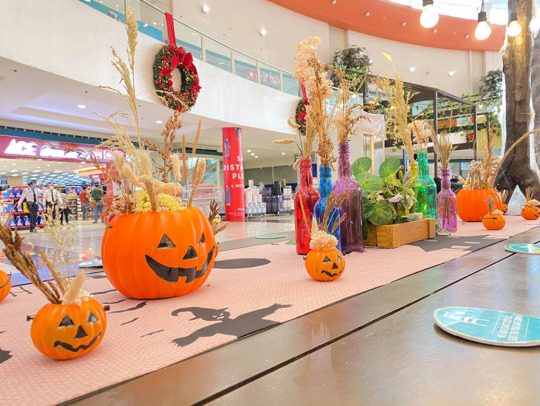
Have a #FAMtasticHalloweenWithSM with these exciting treat
Head to SM City Fairview for a FAMtastic Halloween for you and your kids!For parents and their kids who have been too focused on work and online classes, Halloween is the perfect break to inject more fun and enjoy playful creativity during these times. And with the long weekend just around the corner, SM has FAMtastic surprises so you and your kids can get the thrill out of all the festivities whether at the mall or from your home.So, get your spook on as SM is ready to bring the fun with these exciting treats: 1. Fa-boo-lous Costumes. Part of the joy of Halloween is dressing up as your favorite personas and characters. Even in quarantine, you can still spark joy at home and play dress-up! The SM Store, Toy Kingdom, and SM Markets have a wide selection of FAMtastic Halloween costumes, perfect for your SuperKids to be whoever they want to be this October 31 weekend. Your kids can also join the #FAMtasticHalloweenWithSM Virtual Kiddie Costume Contest on SM’s SuperMoms Club Facebook Group (@SMSuperMomsClub) from October 24 to 31 for a chance to win awesome giveaways from Toy Kingdom! Enjoy a FAMtastic Halloween at SM City Consolacion with exciting treats and surprises! 2. Fun TikTok Challenge. Do you enjoy creating TikTok videos? You can take it to the next level by joining the #FAMtasticHalloweenWithSM TikTok Challenge! Simply record your fun Halloween-inspired dance video to your fave song while wearing your face mask. Show off your best dance moves and submit your entries from October 16 to 31 for a chance to win SM gift certificates. 3. Spooky Halloween Bites. Trick-or-treating may be a bit different this year, but you and your kids can still indulge in some delightful sweets this Halloween. Visit your go-to SM mall and check out Trick-or-Treat bites for your SuperKids, or pick up your orders at designated Curbside Pick-up points in select SM malls. Aside from the sugar rush, you can treat them to a special stay-home Halloween Family Feast through SM Food-To-Go. To access SM Food to Go, customers in Metro Manila may contact SM's Customer Care Hotline Number at (02) 8876-1111. Food lovers outside Metro Manila may contact any of the following numbers: (0917) 8876-1111, (0918) 8876-1111, or (0922) 8876-1111. There are also SM Personal Shoppers who can do that for you and will deliver straight to your door via SM’s delivery partners. Be sure to check on your preferred SM mall’s Facebook page for more info. You can also order via the SM Take Out and Delivery service through its fulfillment partners.Let your kids experience a fun Halloween with SM until October 31!4. #AweSMLearning Online Workshop. Do you miss the kiddie shows in the mall where your kids are entertained and can learn at the same time? Tune in to SM Supermalls Facebook page on October 31 at 11:00 AM and catch a virtual kiddie mall show featuring the most-requested #AweSMLearning Online Workshop – the Digital Painting Class with Teacher Chaye Mogg. The best part: it’s free! Now, that’s both AweSM and FAMtastic!For more information, visit www.smsupermalls.com or follow @smsupermalls on all social media platforms.
0 notes
Photo

“𝙸’𝚖 𝚊 𝚝𝚘𝚝𝚊𝚕 𝚋𝚎𝚐𝚒𝚗𝚗𝚎𝚛. 𝙲𝚊𝚗 𝙸 𝚜𝚝𝚒𝚕𝚕 𝚕𝚎𝚊𝚛𝚗 𝚌𝚊𝚕𝚕𝚒𝚐𝚛𝚊𝚙𝚑𝚢 𝚊𝚝 𝚖𝚢 𝚊𝚐𝚎?“ “𝙸’𝚖 𝚗𝚘𝚝 𝚊𝚛𝚝𝚜𝚢 𝚗𝚘𝚛 𝚌𝚛𝚊𝚏𝚝𝚢, 𝚋𝚞𝚝 𝙸 𝚠𝚊𝚗𝚝 𝚝𝚘 𝚝𝚛𝚢 𝚌𝚊𝚕𝚕𝚒𝚐𝚛𝚊𝚙𝚑𝚢 𝚋𝚎𝚌𝚊𝚞𝚜𝚎 𝚒𝚝 𝚕𝚘𝚘����𝚜 𝚜𝚘 𝚏𝚞𝚗 𝚊𝚗𝚍 𝚜𝚊𝚝𝚒𝚜𝚏𝚢𝚒𝚗𝚐.“ “𝙸’𝚟𝚎 𝚊𝚕𝚠𝚊𝚢𝚜 𝚠𝚊𝚗𝚝𝚎𝚍 𝚝𝚘 𝚕𝚎𝚊𝚛𝚗 𝚌𝚊𝚕𝚕𝚒𝚐𝚛𝚊𝚙𝚑𝚢 𝙸 𝚍𝚘𝚗’𝚝 𝚔𝚗𝚘𝚠 𝚠𝚑𝚎𝚛𝚎 𝚝𝚘 𝚜𝚝𝚊𝚛𝚝.“ Learning Calligraphy might seem intimidating at first, but once you get started and get the hang of it, the creative possibilities are almost endless! Whether you’re a beginner who wants to explore your creative side, or a crafty who wants to improve your calligraphy and lettering skills, you know it’s fun and fulfilling to learn something new, at any age or whatever our other interests are ❤️ We’re in the process of planning our online workshops, and we’ll keep you updated soon!!! 😍 In the meantime, you can check our website for the list of available 𝗖𝗥𝗘𝗔𝗧𝗜𝗩𝗜𝗧𝗬 𝗞𝗜𝗧𝗦 and more details -> 𝗵𝘁𝘁𝗽𝘀://𝗰𝗮𝗳𝗲𝗺𝗶𝘁𝗵𝗶.𝗰𝗼𝗺/𝗰𝗿𝗲𝗮𝘁𝗶𝘃𝗶𝘁𝘆𝗸𝗶𝘁𝘀. :) ⭐️ FREE Delivery within Metro Manila & Calabarzon (on selected packages) ⭐️ We accept COD payments for deliveries within Metro Manila ✨ For digital and printable workbooks: Go to https://cafemithi.com/printables Stay creative and stay inspired! ❤️ https://www.instagram.com/p/CE870Djn_r7/?igshid=9hhlkbbsdnc3
0 notes
Text
The Next Euphoric Stories (Task 1, for WIMternship, Batch 9)

Stories are always interesting whether it’s fiction or nonfiction. Did you know that this is my basic way of traveling? Just like Princess Jasmine of Aladdin, I read a lot which enables me to travel whenever and wherever. It’s also pricey to travel physically. But when a nearby event occurred, I went like a cinema festival and fiesta.
I was born in a time when Mother Mary’s name in Spanish is prevalent to use as a baby’s name. My mom and dad creatively combined their names to come up with my second name. As their eldest daughter, they always taught me to be obedient and study hard.
When I was still schooling, there were many times that I really enjoyed studying. Reading notes when reviewing refreshes me with our lessons, and I was also learning new things about it. Also, there were group stage play practices where my classmates gave their best acting skills. That entertains me.
Outside school, I was actively being a Youth For Christ member before. Now with my age and marital status, I’m in Singles For Christ. Not just did I learn and deepen my relationship with the Lord but also grow as an extraordinary person. I learned how to handle groups of my age and kids. Event organizing, hosting, game mastering, tutoring, dancing, acting and sharing (life lessons) are the skills I also gained together with fellow members. It’s a cool Catholic community.
After working for several years in the corporate world and realizing the first dream I need to fulfill God led me to express my ideas and feelings in the art of written words. A white bond paper is like a canvas, which I slowly begin scribbling letters. Letters that became words. Words that became stories. I make art.
Fast forward fiction writing is not yet for me, so I tried creative nonfiction writing. Mr. Google answered me with a website that, if my memory is right, had published articles about free dating ideas and free dating places in Metro Manila. I applied what I learned about pitching in a workshop I attended and pitched on that site.

And do you know what that very cool and fun website was? The website’s name was WhenInManila.com. I really find it surprising until now that the very first company I pitched in GAVE ME A CHANCE. It’s like I’m half accepted. After completing certain articles and other tasks, thank God because I got in as a contributor writer.
I don’t know my niche at first. Not until I told my first contributions to an editor friend, she said I continue to write features.
I did a feature of a Konmari workshop, a product review of cute & fab Ma-Artsy clips, a Cinemalaya movie review of Xian Lim’s Tabon and advocacy about volunteering on teaching English to elementary students. All these articles were my first in each kind. Later, I’m privilege to write restaurant reviews, cover concerts, traveling and receiving special treatments, which made my heart and soul feel richly alive. Not to mention these were all free!
Still, I need to learn and practice more about the art of writing. It usually takes hours for me to finish an article, so I like to learn how to write faster and that’s why I’m interested to join the internship.
Other things I could qualify with as a WIMtern are being friendly, obedient, patient, honest, imaginative and observant.

Filipinos should experience heightened happiness whenever they read. Positive articles with true stories of peoples and events will not only add warmth in their souls but also make them more intelligent and wiser. That’s what I like to taste in my fruits.
I’m Maria Thenesse Cornelio, a WIM Contributor, and will be glad to join your very interesting WIMternship program.
0 notes
Photo
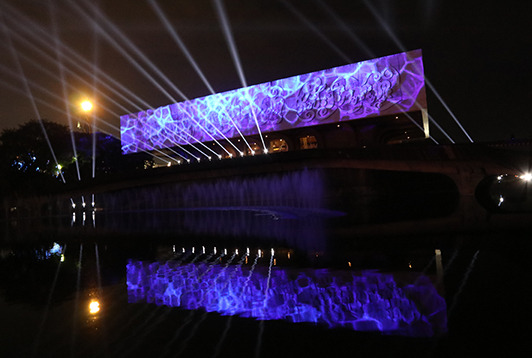
Season's Greetings from the CCP Visual Arts and Museum Division!
As 2019 comes to a close, the CCP Visual Arts and Museum Division looks back on the year that was.
The VAMD presented thirty exhibitions in total this year. Of those, thirteen were solo exhibits and seventeen were group shows. Fifteen exhibits were those presented with partner artist groups and cultural organizations, ten were venue grants, and five were CCP produced exhibitions. Ten of the shows included artists based outside Metro Manila, and four had international artists. Seven were exhibitions by women artists or were women-centered, while nine were exhibitions by male artists only. Twenty of the total number of exhibits for the year included works by women artists. Many forms of art were presented in our exhibitions this year, including design, literature, printmaking, puppetry, comics, etc., but the most represented this year were installation (in nine exhibitions), new media/video (in seven exhibitions), and photography (in four exhibitions).
The VAMD had twenty-three public programs this year, and all were free of charge. Four were Arts Online activities in partnership with the CCP Arts Education Department. Eight were artist talks/panel discussions/lectures, seven were workshop/demos, three were exhibit walk-throughs, and two were performances. Seven were tailored for a specific audience, namely 6-15 year old’s, senior high school students, art educators, and museum workers, while the other programs were open to all. Of the twenty, fifteen included not just male resource persons. Only two included artists from outside Metro Manila, and five of the activities included artists from abroad.
We will continue to monitor these statistics and invite the artistic community to help us better them in the coming years.
The VAMD presented a number of other activities as well, including the highly successful Museum Mile Tour during the CCP’s Pasinaya Festival, and the Earth Day Outdoor installation featuring The Cry of the Dead Whale. We lent artworks from the CCP Visual Arts Collection to five exhibitions in museums in Manila and Singapore. We published four new publications this year - Cultural Cache: Selected Works from the Visual Arts Collection of the CCP, and catalogs from our exhibitions Last Full Show, Saturday Group Gold, and Poster/ity. The VAMD also facilitated two de-installation rituals in line with the re-development of the Museo ng Kalinangang Pilipino, which was formally announced this year as transitioning into the contemporary art museum 21AM. 2019 also marked the start of our new program, the QRated CCP D-I-Y Tour.
These are just a few of the more visible endeavors of the VAMD, all of which would not be possible without the exceptional help of the artists, curators, educators, cultural workers, and institutional partners that we worked with this year. We are wholeheartedly grateful for your continued support and we commend the good work that you do in the service of Philippine art and culture.
Maligayang pasko at manigong bagong taon!
In keeping with the spirit of Filipino Christian tradition, the CCP will hold anew the Simbang Gabi (Dawn Mass) at the CCP Main Building Ramp at 5am from 16 to 24 December 2019 and the Christmas Eve mass at 8pm, Tanghalang Nicanor Abelardo (CCP Main Theater). For more information, please call the CCP Venue Operations Division at (632)8832-1125 loc. 1412/1413.
HOLIDAY SCHEDULE
The CCP galleries will be closed from 25 December 2019 until 1 January 2020. For information about our current exhibitions, visit www.culturalcenter.gov.ph
0 notes
Text









Journey through time.
“A people without the knowledge of their past history, origin and culture is like a tree without roots. - Marcus Garvey”
January 11, 2019 - it will be the first time that I'll go to the national museums of our country, three museums to be exact, the national museum of natural history, anthropology and of fine arts. And heck am I so excited for the day.
I woke up early and ready to go to Manila, in the claws of light hahaha just kidding. I rode the bus from Laguna on the way to the Metro. I climbed aboard the Light Rail Transit (LRT) from Gil Puyat Station to UN Avenue Station. I ate some lunch first and I'm ready to go and travel through time.
It's just a few brisk of walking to my first destination and the blazing heat is already scorching the soul out of me. First depot, the museum of Natural History and at first sight of it's exterior architecture I'm already astounded, well all of them are. But at the time I saw the interior I was breathless of it. My adventure on the musem is making the nature lover inside of me to scream in joy. Different animal habitats and places, all incredibly exhibited. Skeletons and taxidermys of a wide plethora of animals inside. I just realized the beauty of our nature.
Next on my destination, the museum of anthropology it started with the exhibits starting from our pre-colonial times of the Ivory age to the times where we became a hispanic colony. Artifacts and the culture of the people from a distant past. It is really great to see at first hand the famous Manunggul Jar and I just realized one thing from this exhibits, we really like jars right? Before I go out I attended a free workshop on embroidery inside the museum.
Final place on my whereabouts and I'm really excited for this one. The museum of fine arts! And oh wow the first thing that caught my eyes it's Juan Luna's masterpiece the life-size Spoliarium. My heart is trembling upon seeing it with my very own eyes. I sat there for a while and got started to venture this big museum. It comprises of artworks of the colonial times, portraits of different Filipinos, historical figures, and presidents, artworks about the world war and EDSA Revolution and some postmodernist works by different Filipino national artist awardees. I also love the gargantuan mural by Carlos "Botong" Francisco with stills of different stills of event of our nations history. This really is a journey through time.
Dusk has come and it's time to go back home. It's the usual hectic commuting in the Metropolitan gridlock but I'm not feeling enraged, for the joy I'm feeling from going to this museums is already one of the highest point in my life. I watched the sunset, condescending about our country, on how I will love it until the day I die. Padayon, Pilipinas!
0 notes
Text
Workshops and Art Events this April & May
Workshops and Art Events this April & May
Oh my gosh! So many exciting things happening this April and May! You’ve got free workshops, multiple exhibits, art events as well as workshops that require a minimum purchase that will help you make the most out of your summer! I will no longer delay you. Let’s go straight to the schedulesssssssss! :D
April 19-23: SM Stationery Art Fest Where? Mega Fashion Hall, SM Megamall When? April 19-25! What…
View On WordPress
#faber-castell workshops#free workshops#fully booked workshops#metro manila workshops#summer workshops#watercolor workshops#watercolour pencils workshops#workshops rustan&039;s
1 note
·
View note
Text
Smart Women Invest Workshop by FAMI
I value events or workshops that doesn't only feed my insights but also help me get motivated to reach greater heights. I am glad to have attended this Smart Womek Invest Workshop as it also celebrates Women's month last March 2019. I have said to myself, "This event is for me, this event is ME".
FAMI also known as First Metro Asset Management, Inc. is the fund management subsidiary of First Metro Investment Corporation, hosted Smart Women Invest, a financial and investment literacy workshop specifically catered to help Filipinas transform from savers into investors.
There is totally a big difference between saving and investing. It is a positive thing to save but I guess it a brilliant idea to invest knowing that would also benefit us in the future. We all do not want to let our money stuck in one place knowing that it won't progress that much. I am glad to say that at my age, I haven't only invested into travels and car but also to health, life and death insurances. In addition to these, I am happy to say that I've opened my first FAMI investment account last month.

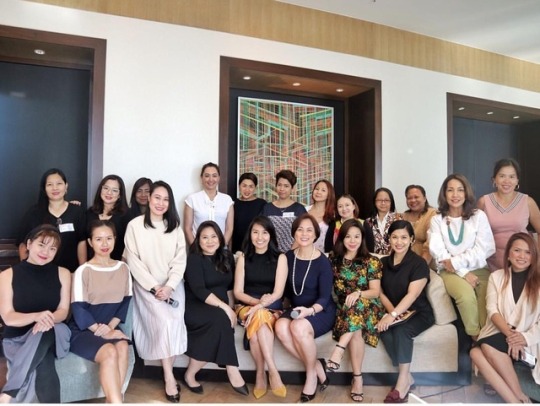
I have learned to be more wise on where to keep and invest my money.
I really do believe that smart women invest and I'm proud to say I'm one of them. We are the women that only do not think of spending without gain in the end.
Remembering my mom, she let me opened my first bank account at a very young age. Now that I'm a grown up, I would like to advise my future kids to invest into something that would not only give them present gratification. It is still best to invest for the future.
Money Mavens
Besides the women-centric learning in finance and investment, the attendees also received a free investment in First Metro Consumer Fund. Roa said, “This is our way of thanking the women who attended our workshop. The First Metro Consumer Fund is invested in industries that benefit from the Philippine family consumption and expenditure pattern. These are industries supported by women and mothers in our country. This is a great way to start their investment journey.”
FAMI president Karen Roa said, “The event was intended to motivate and empower women through the discussion of financial intelligence. This allowed the audience to learn not only how to protect existing resources, but more importantly how to grow one’s assets. By doing so, women are transformed from savers into investors.”
FAMI tapped two of the country’s leading female finance experts to help their fellow Filipinas in their journey towards investing.
Ms. Rose Fres Fausto on the other hand, is known as FQ Mom. She was an investment banker turned full-time homemaker and now a writer, speaker, and resource person on money and family. Her career draws its roots in banking as an analyst at Far East Bank and later on as assistant vice president for Corporate Finance at one of the country’s leading investment houses. She also had a consultancy stint for a USAID renewable energy project. Today she discusses money, parenting, women issues, and the use of Behavioral Economics principles in different aspects of life in her books, columns, online shows, talks, and workshops.


Roa and Fausto engaged an eager audience of fellow go-getting women in an animated discussion about finance. Roa said, “Finance doesn’t have to be as daunting as it seems. Women can do it—and excel in it, too.” Both agree that part of self-determination is mastering the art of handling money.
One of the highlights of the workshop was the online FQ Test, which determines the participants’ standing in terms of Financial Intelligence Quotient (FQ). Fausto said: “In order to have a high FQ, women must first understand their relationship with money. She also added that those who didn’t fare well in the test need not worry because their FQ scores are not cast in stone. They can be improved by tweaking some of their money habits and unleashing the female characteristics that are actually good for investing, allowing them to go beyond saving.”
Figuring Out Finance
Leading the workshop is FAMI’s first-ever female president Karen Roa, a 25-year expert in the field of finance. With a career that spans both domestic and international banking operations, she has a wealth of experience that fuels her financial skills. She has worked with some of the most renowned global companies in banking and asset management, such as Chase Manhattan Bank, SunGard Asia Pacific, trust banking groups of Philam Bank, and Citibank NA. She also served as President and CEO of Philam Asset Management, Inc. (PAMI). Roa was also a lecturer at the country’s top universities, Ateneo de Manila and UP, teaching business courses on strategy, investment management, and financial services.
The best part about a healthy FQ is that its concepts can be learned and, in turn, shared with the family. Fausto said, “Women are large influencers in their community so a woman with high FQ can be a driver in raising children with smarter money sense, build a career and investment life that is fruitful and lucrative, and even lead a household and home that is sufficient and stable. Again, with fortified FQ—women have proven once again that they’re on top of their game.”
Securing a Financial Future
As a member of the Metrobank Group, FAMI holds a veritable reputation in asset management. FAMI’s mutual fund business is adept at promoting savings mobilization and advocates investment literacy, making it the perfect partner for women to learn, live and start loving finance.
It was a life changing afternoon as we've learned a lot from the workshop. I'm grateful to be part of this event with a purpose!
0 notes